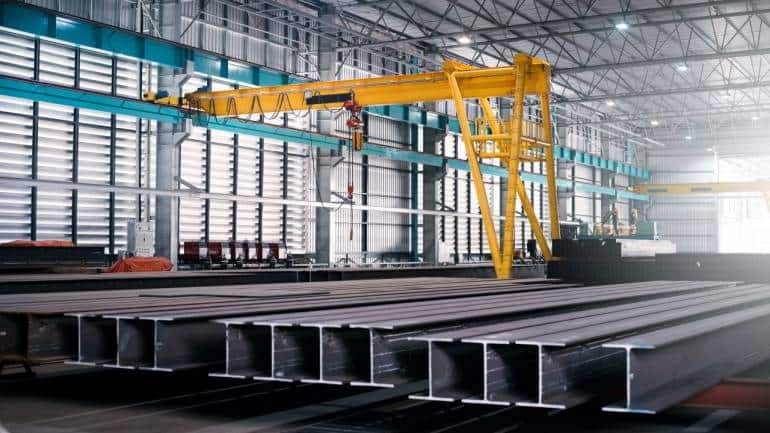India’s production-linked payouts to rise to ₹13,000 crore in 2023: Report

India’s production-linked payouts to rise to ₹13,000 crore in 2023: Report
In 2023, India is anticipating a substantial increase in production-linked incentive (PLI) payouts to manufacturers, with the amount projected to reach a minimum of ₹13,000 crore (approximately $1.6 billion), according to a statement from a senior trade official on August 11. The PLI scheme is a government initiative aimed at promoting domestic manufacturing across various sectors by providing financial incentives based on production targets achieved by manufacturers.
The PLI scheme has gained prominence as a significant policy measure to boost manufacturing and enhance the country’s self-reliance in critical sectors. Under this scheme, manufacturers are rewarded with incentives for meeting specified production milestones, encouraging them to increase their output and contribute to the growth of the economy. The scheme is designed to attract both domestic and foreign investments, fostering innovation, employment generation, and increased exports.
The anticipated rise in PLI payouts reflects the government’s commitment to supporting the manufacturing sector’s growth and resilience. As the economy seeks to recover from the impact of the COVID-19 pandemic, initiatives like the PLI scheme play a pivotal role in stimulating economic activity, generating employment opportunities, and advancing technological advancements. The scheme aligns with India’s broader goal of becoming a global manufacturing hub and enhancing its competitiveness on the global stage.
The significant increase in expected PLI payouts for 2023 underscores the success and popularity of the scheme, indicating a positive response from manufacturers across different sectors. It also highlights the government’s ongoing efforts to fine-tune and expand the scheme’s scope to cover a wider range of industries and encourage further investment and innovation.
Ultimately, the projected rise in PLI payouts reaffirms India’s commitment to fostering a conducive environment for manufacturing growth, technological innovation, and economic development. It reflects the government’s determination to create a more self-reliant and robust manufacturing ecosystem that contributes to the nation’s overall progress.
Indeed, the production-linked incentive (PLI) scheme, valued at $24 billion, operates by providing financial incentives to local manufacturers when they achieve specific targets, primarily related to sales and production. This scheme is designed to foster increased investment in the manufacturing sector and enhance the country’s production capabilities. However, the targets and criteria for receiving incentives can vary from one sector to another.

The PLI scheme’s flexibility allows it to address the unique challenges and opportunities within each sector, tailoring the incentive structure to best stimulate growth and competitiveness. By setting sector-specific targets, the government aims to encourage manufacturers to expand their production capacities, enhance quality, and contribute to overall economic growth.
The scheme has been instrumental in attracting both domestic and foreign investments in various sectors, including electronics, pharmaceuticals, textiles, automobiles, and more. Manufacturers are incentivized to invest in technology, research and development, and modernization of facilities to achieve the set production and sales goals. This approach not only boosts local manufacturing but also leads to improvements in product quality, innovation, and competitiveness.
The PLI scheme’s differential approach recognizes that each sector has its unique dynamics and challenges. By aligning incentives with sector-specific goals, the government aims to create a level playing field and foster a conducive environment for growth and development across the entire manufacturing landscape.
The PLI scheme has garnered attention and participation from numerous industries, reflecting its success in encouraging investments and driving economic expansion. It contributes to India’s efforts to become a global manufacturing hub and enhance its position in the global supply chain.
The scheme’s impact extends beyond immediate financial incentives; it also stimulates job creation, technological advancement, and export promotion. As manufacturers strive to achieve their PLI targets, they contribute to economic recovery, job opportunities for the workforce, and increased exports, boosting the country’s overall economic growth trajectory.
The production-linked incentive (PLI) payouts, initiated in 2020, encompass a diverse range of 14 sectors spanning electronic products, pharmaceutical drugs, textiles, and more. These payouts play a vital role in addressing a significant challenge for India: generating employment opportunities within the manufacturing sector.
Manufacturing, historically a critical driver of economic growth and job creation, has been an area of concern for India due to its relatively subdued performance in terms of job generation. The PLI scheme, with its tailored incentives for various sectors, seeks to reverse this trend by encouraging investments, capacity expansion, and overall growth in manufacturing.
By providing financial rewards to manufacturers who meet predetermined production and sales targets, the PLI scheme stimulates increased economic activity within these sectors. This, in turn, leads to the creation of new job opportunities across different skill levels, from assembly line workers to engineers and technologists.
The scheme’s broad coverage of sectors ensures that a wide spectrum of industries benefits from its incentives, thus contributing to a more balanced and diversified employment landscape. Sectors such as electronics, pharmaceuticals, automobiles, and textiles, among others, play a critical role in driving economic growth and providing jobs to millions of people.

Furthermore, the PLI scheme’s focus on enhancing domestic manufacturing capabilities aligns with India’s aspiration to become self-reliant in various industries. By incentivizing manufacturers to ramp up production, improve product quality, and invest in research and development, the scheme not only boosts job creation but also elevates the overall competitiveness of Indian products in both domestic and global markets.
The scheme’s multi-sectoral approach reflects the government’s recognition of the diverse opportunities and challenges within each industry. It’s designed to leverage the unique strengths and potential of different sectors to create a robust manufacturing ecosystem that drives economic growth and job opportunities.
Overall, the production-linked incentive payouts are a crucial tool in addressing India’s manufacturing challenges and bolstering job creation in various sectors. The scheme’s strategic alignment with the government’s objectives of economic growth, self-reliance, and employment generation makes it a vital instrument in shaping India’s manufacturing landscape and driving the country’s journey toward becoming a global manufacturing hub.
Rajesh Kumar Singh, the Secretary of the Department for Promotion of Industry and Internal Trade under the Trade Ministry, has highlighted the flexibility and adaptability of the production-linked incentive (PLI) scheme. He mentioned that any portion of the allocated ₹24 billion incentive amount that remains unutilized could be reallocated to different sectors or repurposed for revised schemes.
This approach underscores the government’s commitment to maximizing the impact of the PLI scheme and ensuring that funds are effectively channeled to where they can generate the most value. By allowing for the reallocation of unutilized funds, the government aims to optimize the benefits of the scheme, address evolving industry needs, and align with its broader economic and development goals.
The PLI scheme’s agile design, which enables funds to be redirected as needed, showcases a dynamic approach to policymaking. It allows the government to respond to changing industry dynamics, emerging sectors, and shifting priorities, thereby enhancing the scheme’s overall effectiveness and impact.
Singh’s statement reflects the government’s intent to ensure that the PLI scheme remains a relevant and powerful tool in promoting investment, growth, and job creation across a diverse range of sectors. This adaptability reinforces the scheme’s position as a vital driver of economic transformation and development in India.
The Indian government has provided reassurances to global players in the laptop and IT hardware manufacturing sector, clarifying that it does not intend to implement a restrictive “license raj” policy. The recent move to prohibit the import of laptops, tablets, servers, and similar products without a license is aimed at promoting domestic manufacturing within the country.
This assurance was conveyed during a meeting between government officials and representatives from the IT hardware industry. The discussions were prompted by the government’s decision to impose restrictions on the import of certain IT hardware products, which took the industry by surprise. As a response to industry concerns, the government extended the deadline for compliance with the restrictions until November 1, 2023.
The government’s emphasis on boosting domestic production aligns with its broader goals of promoting self-reliance, creating jobs, and enhancing the manufacturing ecosystem in India. By encouraging local manufacturing, the government aims to reduce dependence on imported products and strengthen the domestic IT hardware industry.

The assurance against a “license raj” policy is significant, as it reflects the government’s intent to strike a balance between promoting domestic manufacturing and maintaining a favorable business environment for global players. This approach aims to provide a clear regulatory framework that fosters investment and growth while also achieving the goal of increasing local production.
The engagement between government officials and industry representatives underscores the importance of collaboration and dialogue in shaping effective policies. It also showcases the government’s responsiveness to industry concerns and its commitment to creating a conducive environment for both domestic and global players in the IT hardware manufacturing sector.




